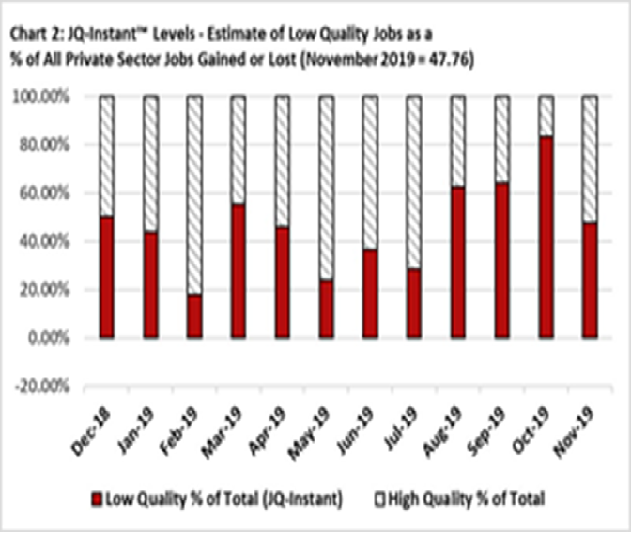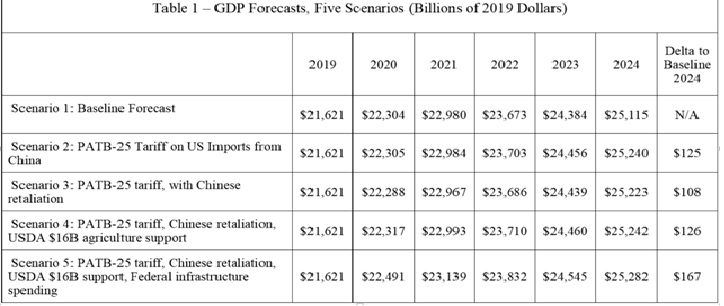Over the past several years, I’ve written nearly 30 articles about programs that address the shortage of skilled manufacturing workers. Last Friday, I had the pleasure of being connected by a friend to interview Dennis Dio Parker, who heads up the Federation for Advanced Manufacturing Education (FAME). The purpose of FAME “is to be the driving force for developing global-best technical talent for manufacturing and other employers of technical workers. FAME strives to be a powerful conduit between industry and education.”
Dennis told me that according to the 2018 Deloitte and The Manufacturing Institute Skills Gap and Future of Work study. “The Fourth Industrial Revolution is transforming the world of work through artificial intelligence, advanced robotics, automation, analytics, and the Internet of Things. Despite common fears, these technologies are likely to create more jobs than they replace—as illustrated by the tight labor conditions in the US and global manufacturing industry.”
While there was a shortage of about 500,000 unfilled jobs in 2018 due to the skills gap of manufacturing workers, the “study reveals that the skills gap may leave an estimated 2.4 million positions unfilled between 2018 and 2028, with a potential economic impact of 2.5 trillion.” The reason why 2028 is a watershed year for the age of workers is because the last of the Baby Boom generation (1946-1964) and the first of Generation X (1961-1981) would be starting to retire.
Dennis explained that the FAME Advanced Manufacturing Technician Program was an outgrowth of training that Toyota Motor North America provided for employees when they built their new manufacturing plant for vehicles in Georgetown, KY in 1987. Dennis was one of the first 13 trainers hired to start the training in 1987 and he is the last one still working of the original 13 as he transitions to support transfer of the program after The Manufacturing Institute and Toyota Motor North America announced a partnership to hand-over operation and stewardship of FAME in September 2019.
Dennis added, “Toyota had the advantage of having a culture of continuous improvement, and we continually improve the program. The original vision was to have the training program set up at eight locations where Toyota has a manufacturing presence in North America. We wanted to have other manufacturers as partners in these regions to create a pool of skilled workers for all. Part of our goal was to help solve the problem of the lack of skilled workers, but the problem is too big and endemic for one program to solve. There are a lot of good programs, but FAME is different from the others in the way it is structured. This is an employer-led program, not an education-led program.”
When I asked how the training expanded out of Toyota, he said, “In 2005, Ernie Richardson and I made a proposal to Keith Bird, Kentucky Community Technical College Chancellor and Jim Kerley, BCTC President to build a new community college in Georgetown to introduce a new education program. The new campus design was established at NAPSC in 2006 and began operation with the first students in 2007.
With the campus in place, we completed development of the Advanced Manufacturing Technician program establishing an employer group to participate in it. I contacted Ken Carroll, then V. P. of the Kentucky Association of Manufacturers, and worked with him to develop an employer collaborative to support the AMT program. We held the first discussions with other companies in 2008 – 2009, and by October we had formed an organization and elected officers. The first name was the Bluegrass Manufacturing Development Collaboration. (B-MDC)”
He explained why the program stalled, saying, “The Great Recession hit full force in 2009, and we decided to be inactive until business conditions improved. However, Toyota began the first AMT training class in August 2010 at the new campus. By 2011, business conditions had improved to the point that Ken and I decided that it was time to restart the B-MDC. On September 29, 2011, the group met again. We had invited a number of special guests to help relaunch the effort, including Jennifer McNelly, president of the Manufacturing Institute; Wil James, president of Toyota’s Kentucky plant; Dr. Vince Bertram, national president of Project Lead the Way; and Dr. Stanley Chase, a national expert on educational collaboration with business and industry. Since that meeting, the employers group supporting the AMT Program has been in continuous operation.”
Continuing, he said, “Other companies sponsored their first students in the AMT Program with the class of 2012 when 3M, Central Motor Wheel Manufacturing, and GR Spring added their students. In March of 2013 the re-born B-MDC elected new officers, installing Terry McMichael of 3M as President and Danette Wilder of SealingLife as Vice President.”
When I asked how the name was changed to FAME, he said, “The West Virginia Toyota plant started the AMT Program with their college and in close partnership with the West Virginia Manufacturers Association (WVMA). When West Virginia governor announced the start of the AMT Program, he also announced “WV FAME” as the name for the future group of manufacturers which would support AMT in West Virginia. The “FAME” name was immediately recognized as a powerful promotional identifier for the whole Advanced Manufacturing Career Pathways effort, and with permission of the WVMA, we adopted FAME as the name for North American use, and the B-MDC voted to change the name of the group to KY FAME.”
He
added, “On January 14, 2014, Governor Steve Beshear announced the formal
incorporation of KY FAME as a state-wide organization with a state board of
directors to guide it and direct support of the Kentucky Cabinet for Economic
Development. The Kentucky Community and Technical College System adopted AMT as
a state-wide degree track, available anywhere that a local FAME chapter formed.
a KY FAME chapter.
Dennis expressed that the results of the training were so compelling that the FAME sites became a destination for educators and educational researchers, business and industry, and news organizations. The AMT programs in Kentucky began contributing to research and study efforts, and had over 1000 visitors from across the U.S. and six foreign nations. It was judged by many national educators and workforce leaders to be the best 2-year technical program in the U.S.
He said, “The results of the program and the publicity fueled the growth beyond what Toyota ever expected. It became more than what Toyota could effectively support. Toyota wanted to maintain what they had, but wanted to establish it on a long-term basis. This is what led to the program being transitioned to management by The Manufacturing Institute. In order to help make this transition successful, I am now on assignment by Toyota for the next few years to manage the transition.”
Dennis explained, “There are currently 403 participating companies at 34 community college campuses and four universities in 13 states, and the numbers are growing every year. The reason for the success is that the employer, not the student, is the number one customer and the profoundly higher outcomes of FAME AMT graduates compared to traditional graduates. The program incorporates the six professional behaviors, the seven essential behaviors, and the five professional practices, all soft skills, in addition to the manufacturing core exercises that are based on five Lean manufacturing practices. As a result, the program provides globally competitive technicians that support the success of U. S. manufacturing. The program is a core pipeline for students to continue to Advanced Manufacturing Business and Advanced Manufacturing Engineer degrees. In the AMT program, students go to school three days a week, and work for their sponsoring manufacturer two days a week. The students are paid for their work, and the student makes enough to pay their tuition, so they can graduate without any student debt.”
He elaborated on future strategies by saying, “We want to proactively change the equation for technical career pathways. We have been partnering with Project Lead the Way (PLTW) to engage PreK-12 students in the career pathway because they have a comprehensive, seamless, and coordinated PreK -12 program nationwide. Toyota and others are already providing plant tours to high school students in PLTW programs. Currently, the PLTW national office supports FAME with development or material and other engagement activities and FAME supports the PLTW national office with PR and involvement with activities on a regional basis.
We also partner with the National Alliance for Partnerships in Equity (NAPE) because they focus on encouraging young woman and minorities to choose STEM careers. Their “Make the Future” program, developed at our request, is connecting girls to manufacturing.”
I told him this topic is dear to my heart as I have been a woman in manufacturing since starting as an engineering secretary at age 18. I concluded the interview by saying it was a pleasure to learn about FAME and hope that it will expand westward in the future all the way to California where I live.

